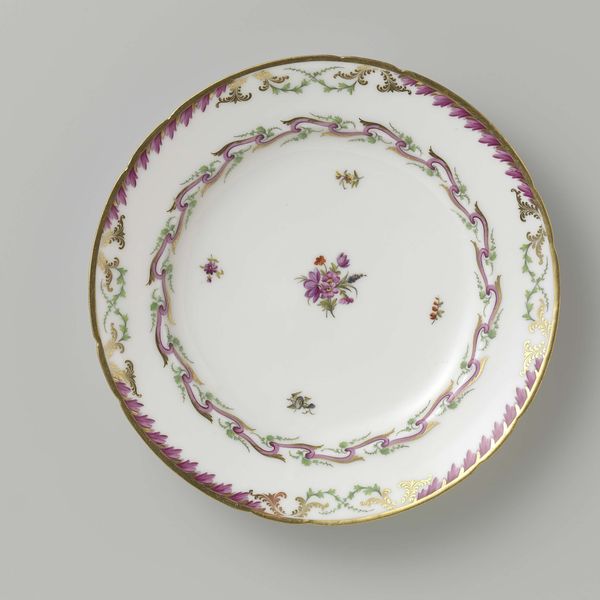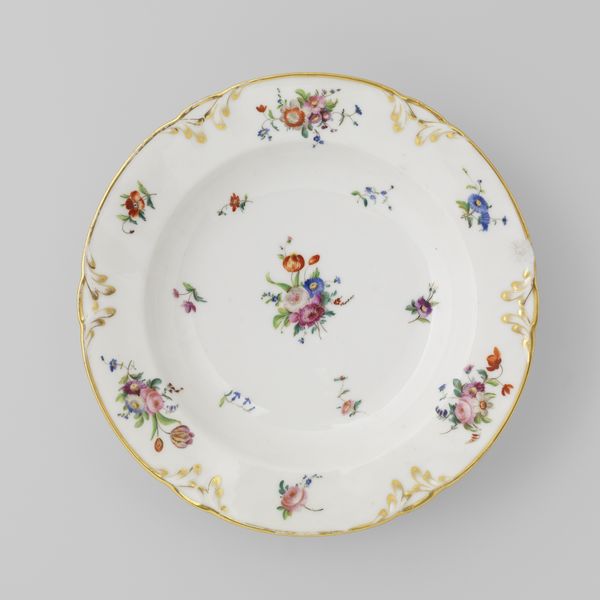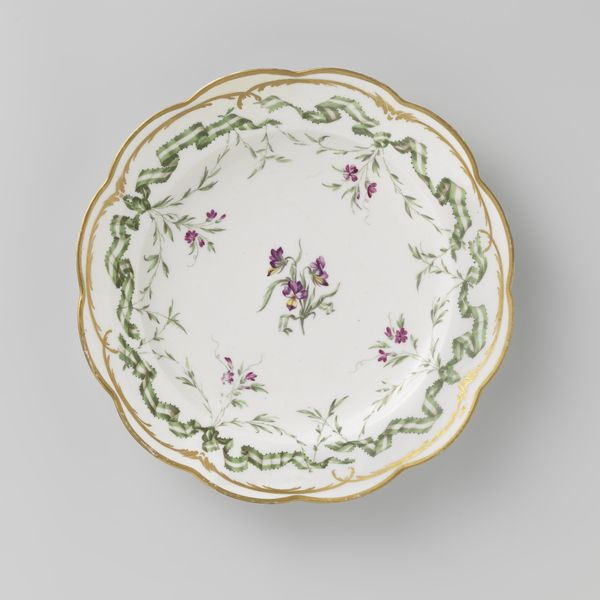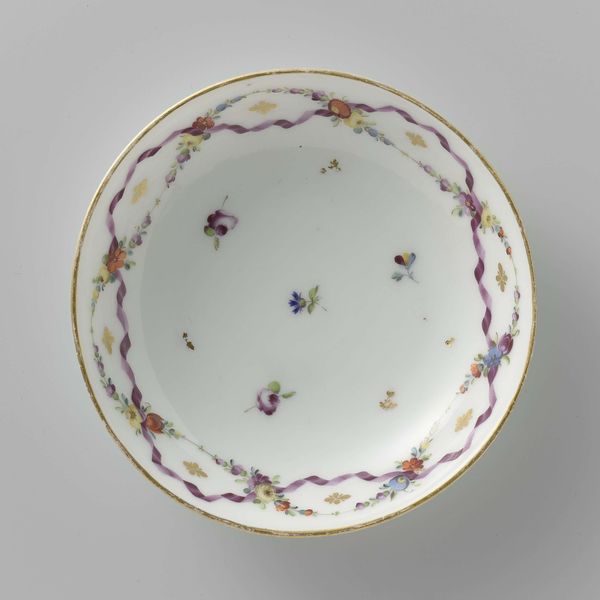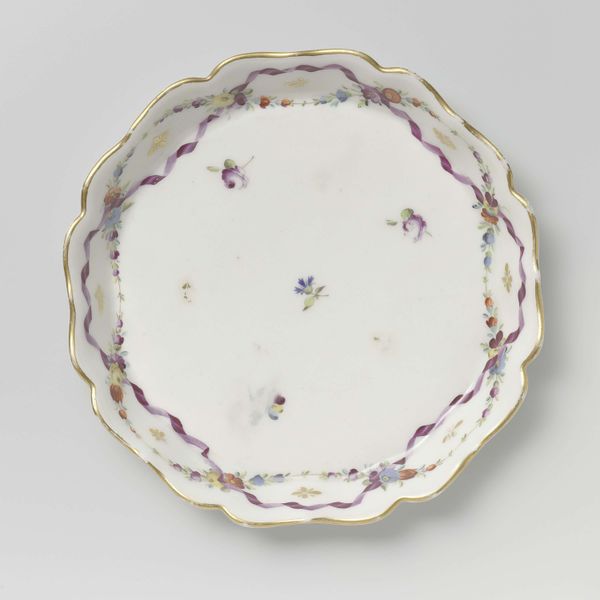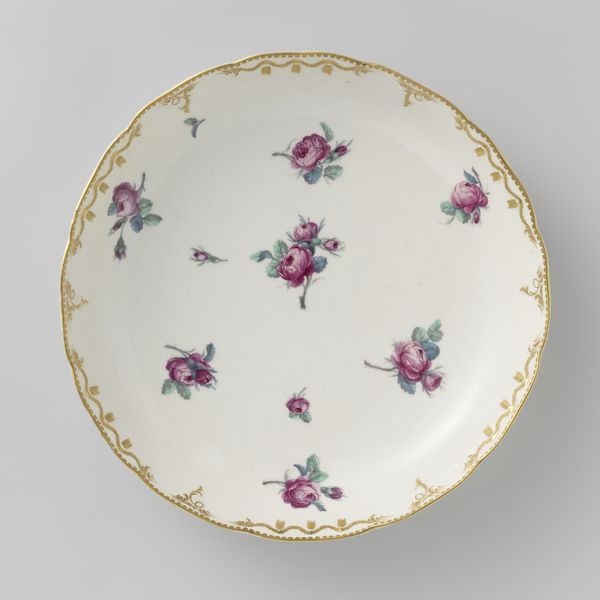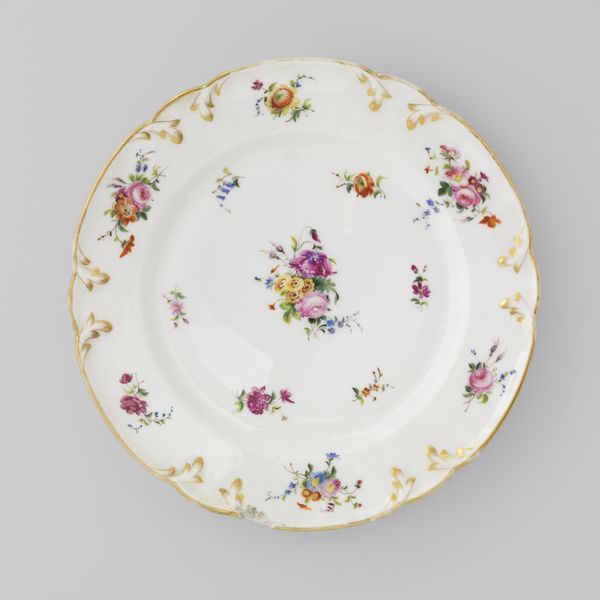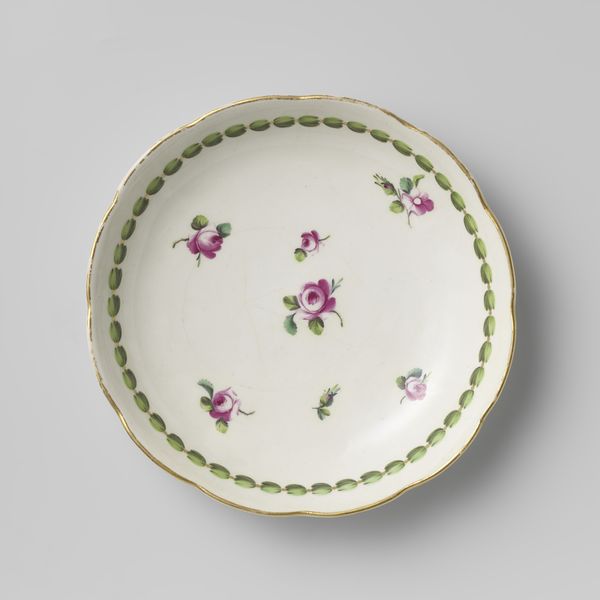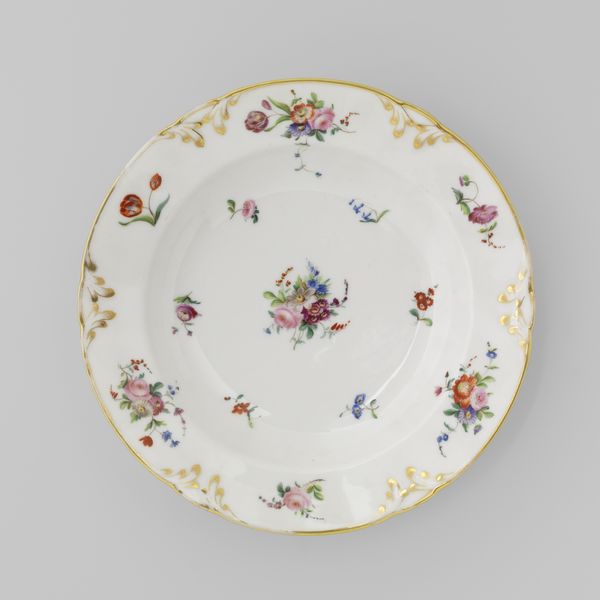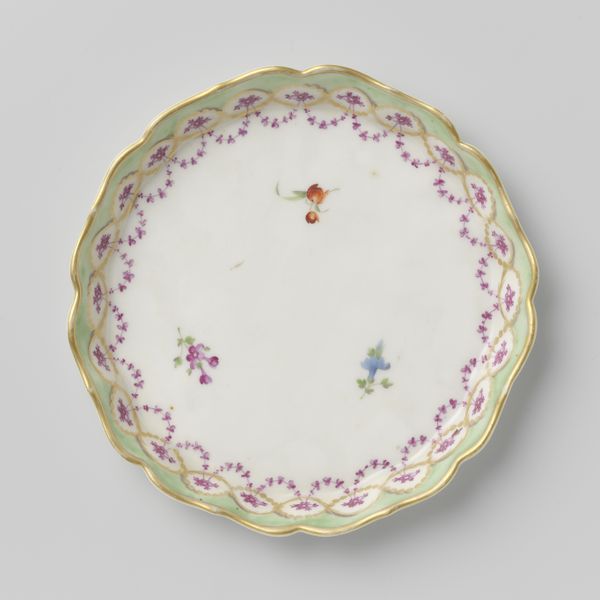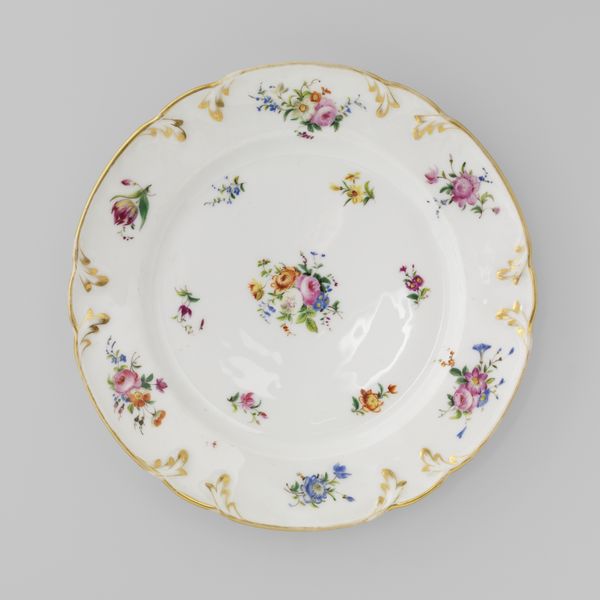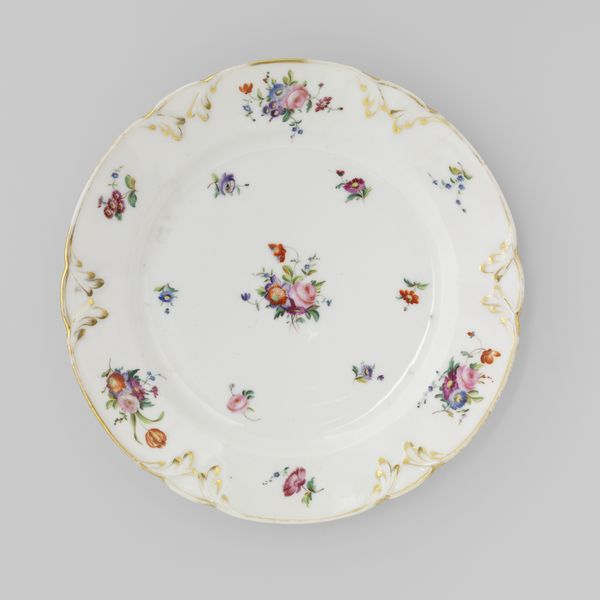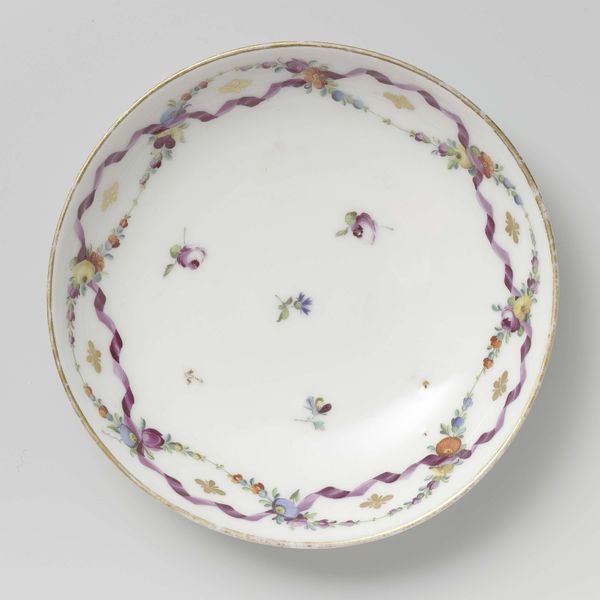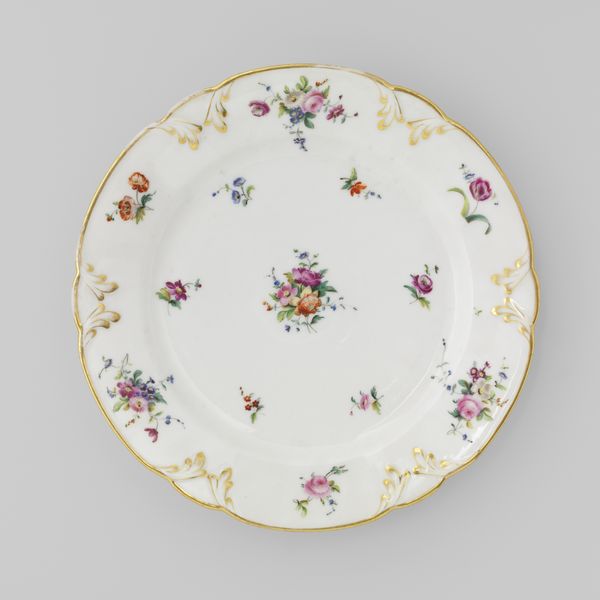
Schotel, beschilderd met voluutvormige velden en strooibloemen c. 1782 - 1784
0:00
0:00
Dimensions: height 8 cm, diameter 46.5 cm
Copyright: Rijks Museum: Open Domain
Curator: Looking at this porcelain plate, created around 1782-1784 in Loosdrecht, I immediately notice the lightness and delicate air it exudes. Editor: It certainly seems characteristic of its time, doesn't it? We see this delicate quality quite frequently in Rococo decorative arts. Curator: Indeed. Let’s delve deeper into the means of its production. This “Schotel,” as it’s known, showcases both hand-painting and the meticulous labor involved in crafting fine porcelain during that era. The soft paste porcelain, known for its lower firing temperature, required specialized skills, as Loosdrecht was really testing out its manufactory. Editor: The Loosdrecht factory’s place in the story of Dutch porcelain is significant. They benefited greatly from the expertise of knowledgeable entrepreneurs. These were people looking to establish industries for their own gain within the social structures and markets of the time, to build luxury networks catering to a specific clientele. Curator: Exactly! You can see the emphasis on ornamentation typical of the time. Consider the labor involved in rendering those tiny floral motifs scattered across the plate! The floral sprigs contrast nicely with the ornate volute band, don't you think? I see not only the aesthetic choices but also the underlying commercial strategies at play. Editor: Definitely. These decorative elements would’ve been fashionable and therefore profitable. Wealthy patrons certainly admired items like these. It's a fascinating example of the intersection of artistic production and consumption in the late 18th century. Curator: It truly reflects a convergence of material, skill, and market demand. I think what intrigues me most is considering all of these different levels as design aspects in and of themselves. Editor: I agree; appreciating this plate encourages us to think critically about the intertwined histories of art, society, and industry. The plate represents how imagery played into the socio-political fabric of its moment, and really provides us a unique understanding of Loosdrecht at the time.
Comments
No comments
Be the first to comment and join the conversation on the ultimate creative platform.
